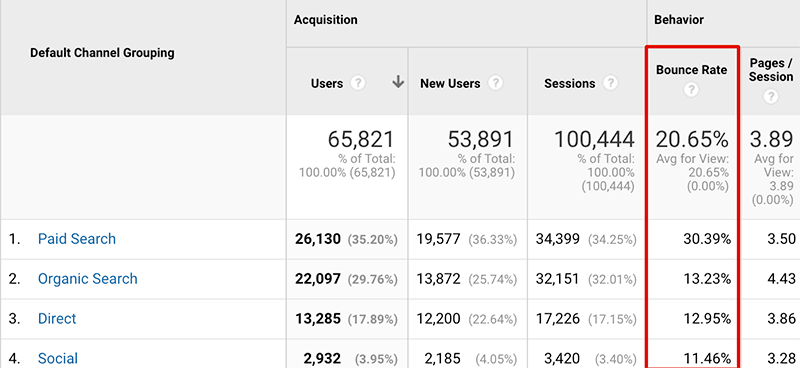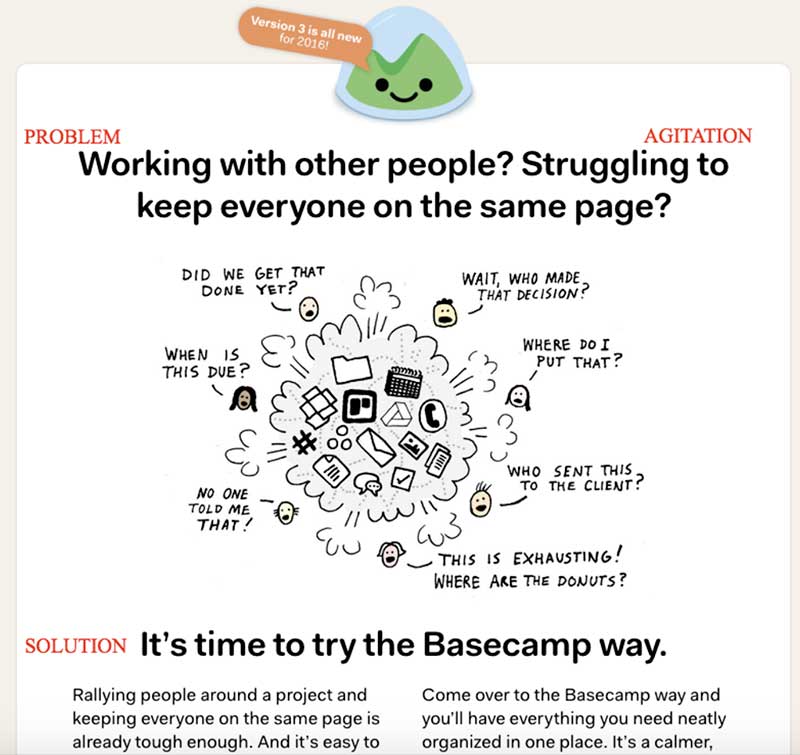The organic bounce rate is one of the most controversial metrics in digital marketing. But if you are doing SEO and attracting organic traffic, organic bounce rate is also one of the most important metrics. This metric is also known as dwell time.
What is dwell time (and why is it important in SEO)?
There is a difference between the default bounce rate that we see in Google Analytics and the organic bounce rate. When someone looks at one page and leaves your site, a bounce occurs. Thus, your bounce rate is the proportion of sessions with one page, divided by all sessions (or an individual page).

Many marketers are concerned about Google using bounce rates as a ranking factor, which is not the case. They don’t use the standard bounce rate metric that we see in GA because it can be easily manipulated.
On the flip side, dwell time is the actual time spent by someone on a web page, between clicking on a link within the search results, and going back to the search results.
Most certainly, you have done this thousands of times. We initiate a search, browse the results looking for a match, and click one of them to see if the web page contains the information we’re seeking. You know the rest of the story… The page either didn’t match what you were looking for and you hit the back button immediately, or it was enough of a match that you stuck around a while to find your answer.
Many top global SEOs have researched this dwell time metric and they have proven that Google is actually using it as a ranking factor. The first one was Dr. Pete from Moz back in 2012. More recently, other pros have argued that this metric matters.
Here is a sample report of dwell time that I calculated in my blog:

These pages have an extremely short dwell time if compared to the typical average on my site. Pages with very low dwell times might indicate that the page is delivering a very poor experience.
5 ways to increase dwell time (with more chances to win at SEO)
1. Understand your audience
Having a good dwell time starts before you even design your landing page for SEO purposes. The first thing you need to do is research your target audience. A few benefits of better understanding your audience are:
Writing tailored content
Writing content because you think it’s relevant won’t engage your users and reduce dwell time, but writing to answer your users’ queries will.
Understand user behaviour
There is always a reason why a user lands on your page and why they take – or don’t take – an action. Understanding these factors will reduce the organic bounce rate and your dwell time consequently.
More engaged users
By reading what you have written, your users might get interested in your content even more. If you link internally your articles with other relevant posts, you will improve engagement and reduce dwell time.
2. Improve page load speed
It’s not a surprise that a faster loading page performs better than a slow loading page. However, it is surprising that many websites get this metric wrong. According to Google, it takes 22 seconds on average to load a mobile page. This means that 53% of visitors will bounce.
If you want to improve your landing page speed, you need to do a few things:
- Audit your mobile speed using Google page speed insights tool
- Review the number of excessive plug-ins on your CMS
- Check your 301 redirects that can slow down your page loading speed
- Optimize images and videos, best practice is to keep image files dimensions around 500KB
- Reduce CSS and JS dependency
Use the right SEO tools
Not all SEO tools are the same. Make sure you use the right SEO software that’s been proven to report page loading speed and give recommendations on how to fix them.
A well-optimized, organic landing page not only provides useful content for your users, but also ensures you give your users a positive experience. And both of these elements are important to reduce dwell time.
3. Use the PAS technique
One of the most important functions of your copy is ensuring users take an action on your page. Every word counts and there are techniques you can use to make the most out your content. This will reduce dwell time and improve your rankings.
The PAS technique is one of the most effective. Let’s use Basecamp homepage as an example.

Problem
Clearly lay out what the customer pain points is. The point of pain here is chaos. In the “Before Basecamp” section, Basecamp employs colorful language to let you know what happens in customer’s eyes.
Agitation
Make your copy more emotional. You should make your reader wish it even more before you provide a light at the bottom of the tunnel – your product. Basecamp stresses the fact that not having project management is stressful.
Solution
At the end provide the solution (your product or services). The phrase Basecamp in the “After Basecamp” part allows you to practically feel the relaxation and “feeling of peace.”
4. Match your landing page URL with your keywords and page title
One of the reasons why users leave your page and return to their search results is because they didn’t quickly find anything relevant on your page. This often signals a mismatch between the query they were searching for and the content elements on your page, including the landing page URL, your page title and the intro copy near the top of the page.
Often, this is something that webmasters and developers do not even notice when building a website. And that’s normal to see especially if keywords research is not done properly. This is where employing an SEO professional can make a big difference, by making sure that these elements are aligned:
- The URL contains one keyword
- The page title also contains the same keyword, or a variation of it
- Your copy goal is about matching the type of information people are searching
- Your main image is relevant to the keyword
In short, one of the most important components is relevancy. When your page elements are aligned with the users’ query then you have good chances to increase your dwell time and reduce bounce rate.
5. Inform your visitors about the length of your copy
Another technique that has been found beneficial by many content marketers is the time it takes to read it at the start of the article. Evidence suggests that a reader is encouraged by the psychology behind the provision of such information.

Focus on increasing dwell time for SEO success
SEOs often struggle to understand how well they can reduce organic bounce rates and these tips above can provide you with some solutions.
After all, keeping people longer on your landing page helps with increasing the chances they’ll visit your other website pages and ending up in taking the desired action.
For more great tips, tricks and how-tos, subscribe to the DivvyHQ blog today!